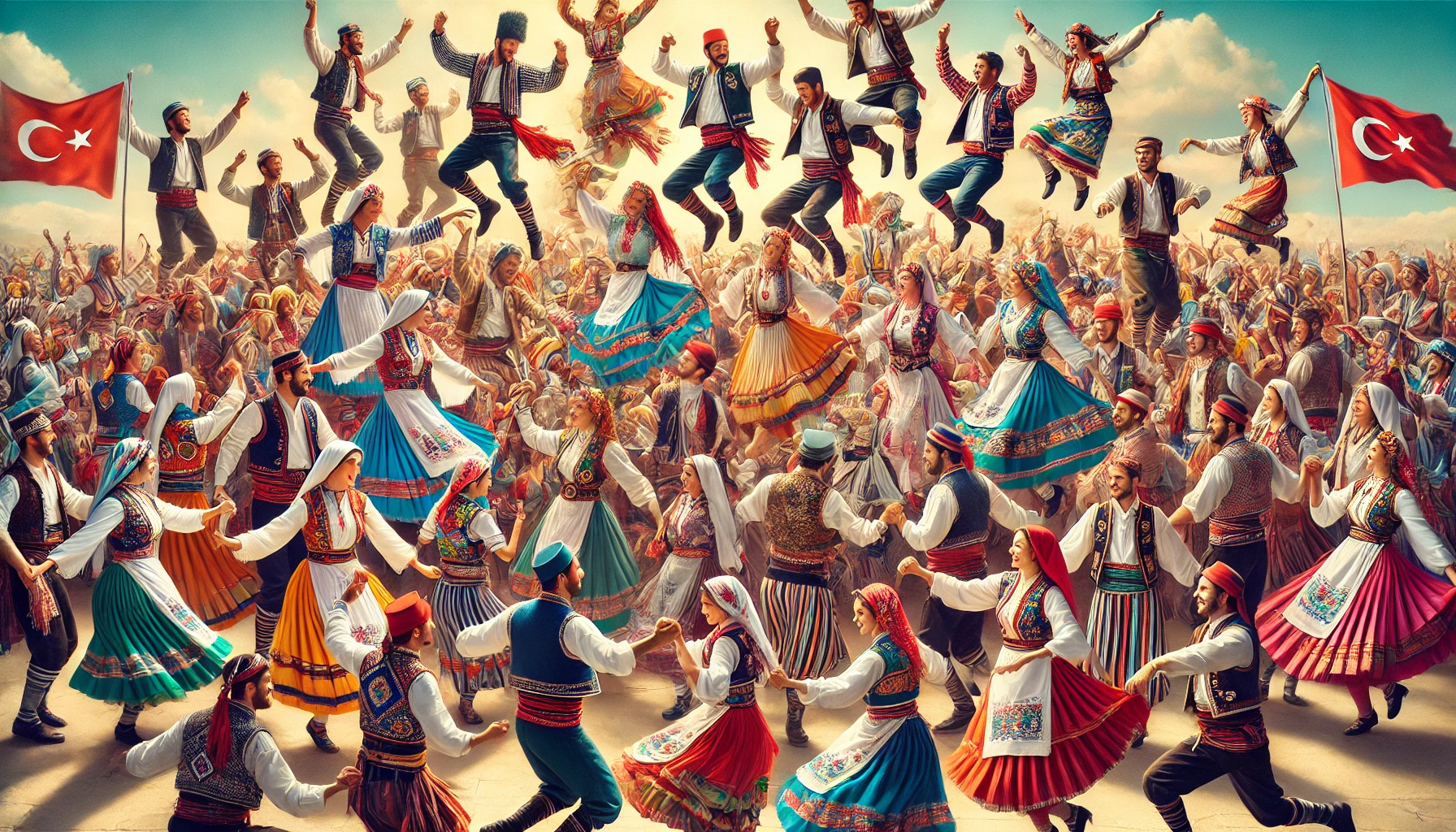The Vibrant World of Turkish Folk Dances
Every region in Turkey has its own dances, each composed of unique moves and melodies that are essential parts of all celebrations. Traditional folkloric dances are colorful visual performances that are highly enjoyable and offer a glimpse into the rich cultural heritage of the country.
Zeybek: The Heroic Dance of the Aegean
Origin and Significance
Zeybek is a traditional folk dance performed in the Aegean region, particularly in Izmir. It is characterized by its slow, proud, and heroic movements, symbolizing the bravery and courage of the Zeybek warriors who once protected the region.
Dance Characteristics
- Posture and Moves: Dancers perform with a straight posture, taking wide and firm steps. The arms are held high and outstretched, mimicking the wings of an eagle.
- Costume: Traditional Zeybek costumes are elaborate, featuring colorful vests, wide trousers, and accessories like daggers and belts.
- Music: The dance is accompanied by traditional instruments such as the baglama (a type of lute) and drums, creating a rhythmic and evocative atmosphere.
Horon: The Energetic Dance of the Black Sea
Origin and Significance
Horon is a lively and energetic dance style popular in Rize and the Black Sea region. Known for its fast-paced and rhythmic movements, Horon reflects the spirited and lively nature of the Black Sea people.
Dance Characteristics
- Posture and Moves: Dancers form a circle, holding hands or linking arms, and perform synchronized steps that include rapid footwork, jumps, and spins.
- Costume: Traditional Horon costumes often include vests, shirts, and trousers for men, and colorful dresses with aprons and headscarves for women.
- Music: The dance is accompanied by the kemençe (a type of fiddle) and the davul (a large drum), producing a fast and upbeat tempo.
Misket: The Folk Dance of Ankara
Origin and Significance
Misket is a popular folk dance from Ankara in Central Anatolia. It is known for its playful and rhythmic movements, often performed during celebrations and social gatherings.
Dance Characteristics
- Posture and Moves: The dance involves intricate footwork, with dancers often forming lines or circles. The movements are graceful yet energetic, reflecting the joy and merriment of the dance.
- Costume: Traditional Misket costumes include colorful dresses and skirts for women, and vests, shirts, and trousers for men, often adorned with embroidery and accessories.
- Music: Misket is accompanied by traditional instruments such as the zurna (a type of oboe) and the davul, providing a lively and festive rhythm.
The Cultural Significance of Turkish Folk Dances
Turkish folk dances are more than just performances; they are a celebration of the country’s rich cultural heritage and regional diversity. Each dance tells a story, reflects the characteristics of its region, and brings people together in joy and unity.
Celebrations and Festivals
Folk dances are an essential part of Turkish celebrations, including weddings, festivals, and national holidays. They provide a colorful and festive atmosphere, encouraging participation and fostering a sense of community.
Preservation of Heritage
Traditional folk dances play a crucial role in preserving Turkey’s cultural heritage. Through performances and dance schools, these dances are passed down from generation to generation, ensuring that the rich traditions and stories they embody continue to thrive.
Conclusion
From the heroic Zeybek of the Aegean to the energetic Horon of the Black Sea and the playful Misket of Central Anatolia, Turkish folk dances offer a vibrant and captivating glimpse into the country’s cultural tapestry. These dances are a testament to Turkey’s regional diversity and the enduring spirit of its people. Whether you are watching a performance or joining in the dance, the world of Turkish folk dances is a delightful and enriching experience.
Latest Update: May 22, 2015
Your Content Goes Here
A brief summary of the key points in this article.




